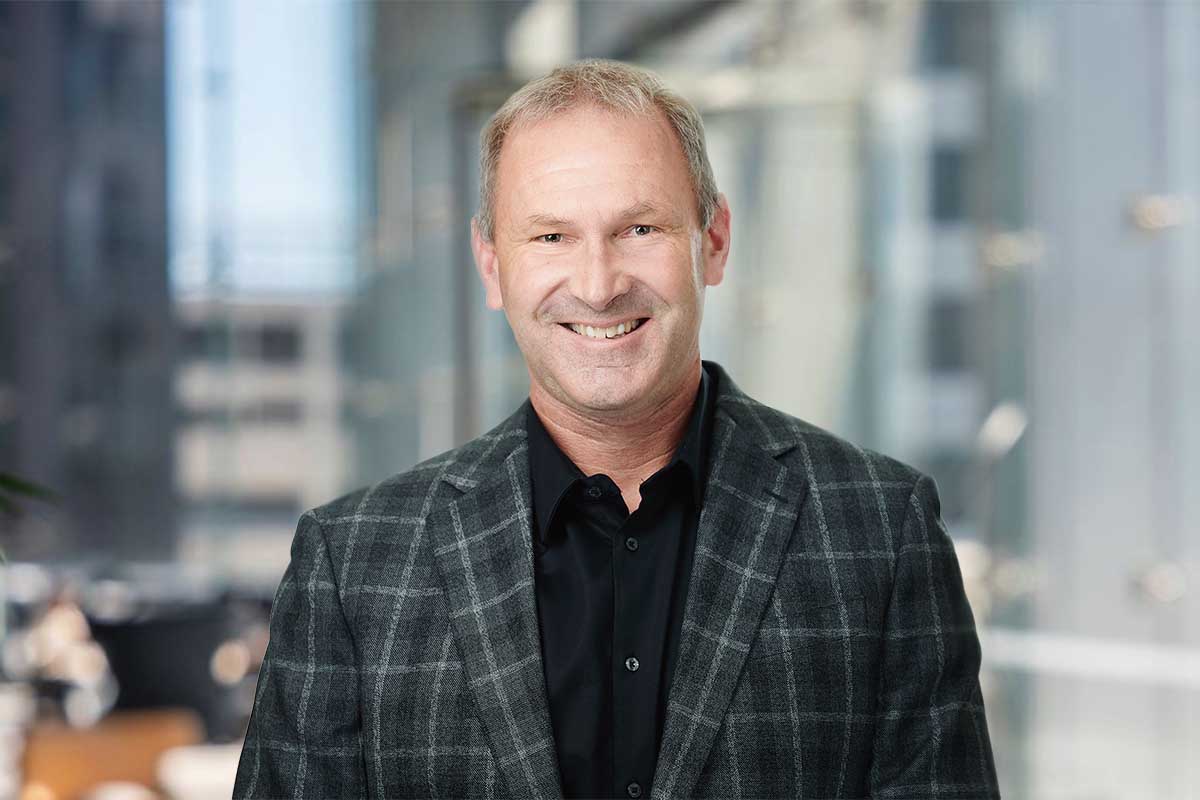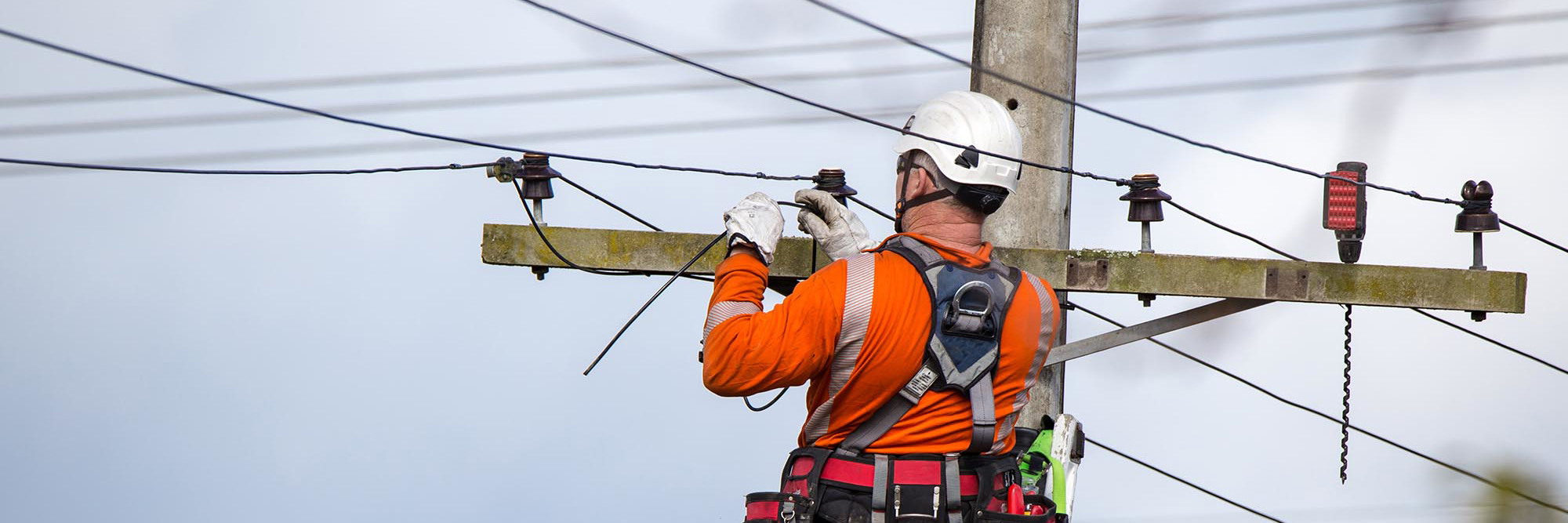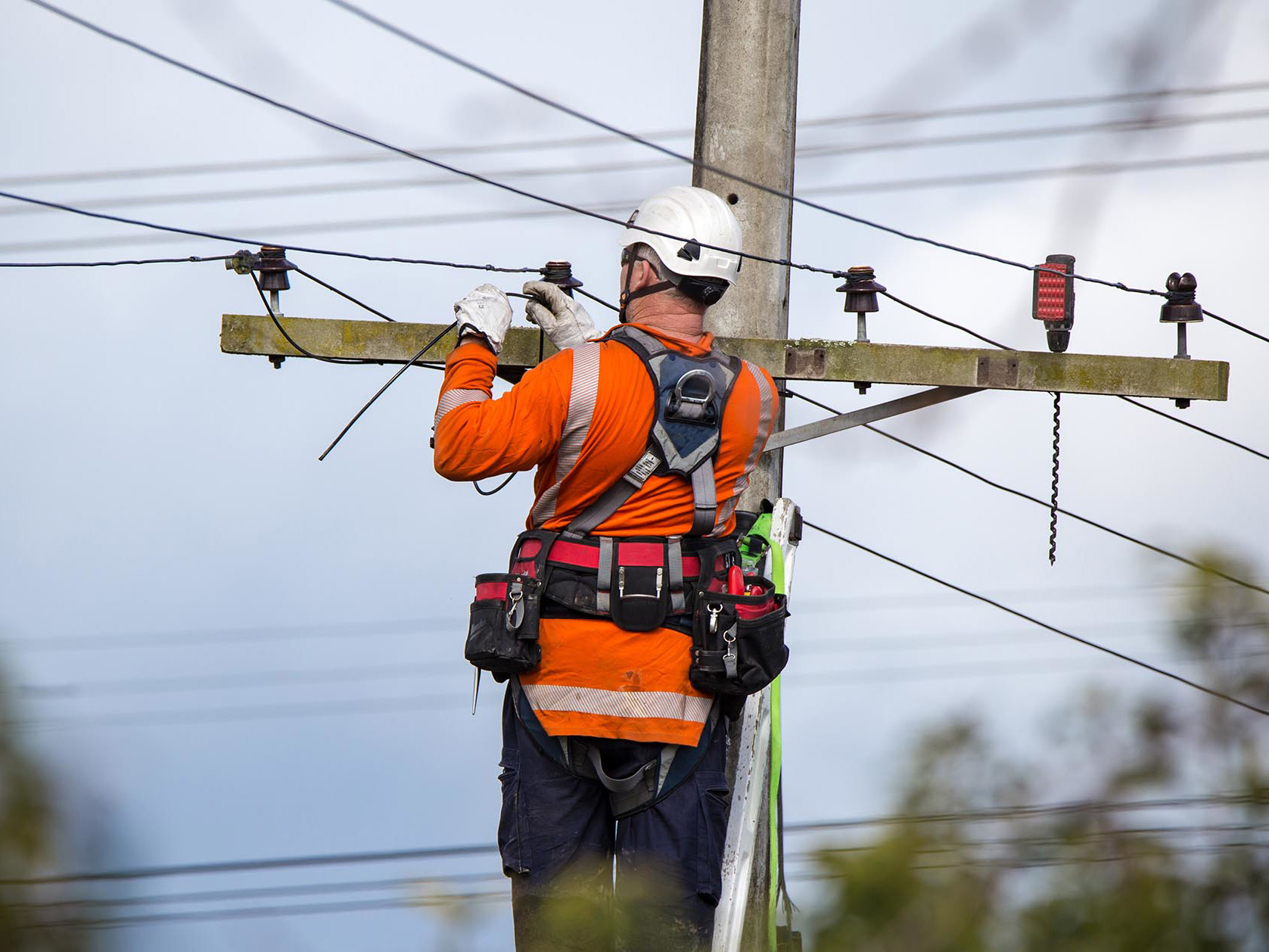The transmission and distribution infrastructure required to support electrification is significant but achievable if we take a long-term view, according to Andrew McLeod, Northpower’s Chief Executive.
Northpower operates and maintains both the electricity distribution and fibre networks in the Whangārei and Kaipara region. It is also one of New Zealand’s largest energy construction companies, providing specialist contracting services on its own networks to other network owners, and to private customers across the North Island. Consumer owned, Northpower aims to enable communities via its role in infrastructure, build futures in the industry through development of sector capability, and provide a direct financial contribution back to its Northland consumer owners.
MinterEllisonRuddWatts Partner and Energy Sector Lead, Scott Thompson, sat down with McLeod to zero in on the challenges and opportunities Northpower is seeing in the transition to electrification and decarbonisation.
Overall, McLeod’s message is positive: New Zealand’s energy construction sector has the capability and track record to scale up and Northpower is ready to play a key role in enabling New Zealand’s renewable energy future. To unlock this potential, we need to collectively agree a clear plan so local capability can be developed and key investments rolled out.
The transmission and distribution challenge
Scaling transmission and distribution network investment is a key recommendation in The Future is Electric, Boston Consulting Group’s (BCG’s) decarbonisation roadmap for New Zealand’s electricity sector [1]. Delivering 98% renewable electricity by 2030 [2] will require investment of at least $30b in the 2020s, including $22b in distribution infrastructure to enable electrification and integrated distributed energy resources.
BCG’s roadmap and Transpower’s Whakamana i Te Mauri Hiko [3] work are reminders that the path to decarbonisation is a multi-decade challenge requiring deep, structured, and focused investment into the transmission and distribution networks to enable new generation.
So, can New Zealand meet this infrastructure challenge?
Scaling up
McLeod is not fazed by BCG’s numbers or the task ahead. He notes the transmission and distribution networks are fundamental to an electrified economy and the sector is increasingly focused on ensuring the right investments are made.
Scaling Northpower to be part of the solution is already a focus for the company. In the past five years, the quantum of delivered work programmes has scaled up by close to 50% to meet sector growth. Northpower has invested in capable construction plant and equipment that leverages a highly skilled workforce and drives up overall productivity. Where a few years ago projects above $5m were rare, $10m to $20m projects are now part of the construction landscape.
McLeod sees this lift in work programme value as a sign that the market is starting to lean into decarbonisation and invest at scale to enable the shifts New Zealand needs. He’s complimentary of the investments being made across distributors in New Zealand, and proud to have been part of supporting the lift to date. He’s also confident Northpower can meet its clients’ increasing demands as their decarbonisation efforts accelerate.

There is certainly strong pressure in the labour market, but this industry is at a very exciting point so has the potential to bring new people into the sector. I’ve seen the construction side of our industry scale over the last two decades, and we’ll see it again now. The key here is ensuring we create a stable pipeline of work to avoid any sense of ‘feast or famine’. Provided we can establish clean access to work, companies like ours will bring new people into our industry and move us to another level of delivery. Once those delivery engines turn on and scale, they will meet the challenge.
McLeod’s comments reflect Northpower’s passion for building depth of technical capability, including offering “in the field” experience. He urges us all to recognise the value of growing local skills and capability as part of the energy transition and to engage with that possibility.
Industry and government alignment
Despite his confidence in the energy construction sector’s capability, McLeod flags the need for industry and government to combine to establish a clear direction and enable construction plans to be locked down. He notes the Infrastructure Commission has been candid about the need for long-term certainty of both funding and investment flows for capability in key infrastructure sectors to scale. Certainty is central to enabling construction companies to invest in both people and plant, and is a necessary precursor to closing the infrastructure gap. New Zealand’s Energy Strategy is due by the end of 2024 [4] and ensuring this commitment is met will be a key step in bringing certainty to the path ahead.
McLeod refers to the Ultrafast Fibre Broadband rollout, which Northpower built for the Whangārei and Kaipara regions, as an example of what clarity can achieve. He says the transition from copper to fibre in New Zealand demonstrated clear vision, clear commercial frameworks, and strong alignment between government and industry. From a standing start, the nation transitioned to one of the best and most cost-effective fibre rollouts in the world.
Renewable Energy Zones
One thing that McLeod wants to see in any Energy Strategy is engagement with the concept of Renewable Energy Zones (REZs).
Exploration of REZs is a key initiative in the Emissions Reduction Plan [5] and is also recommended by BCG to help align transmission and generation investment [6]. In a REZ, multiple generators or major electricity users agree to co-locate to enable cost-effective investments in electricity infrastructure thereby enabling renewable electricity to power more homes, community facilities, and businesses [7]. Northpower worked alongside Transpower and fellow Northland EDB, Top Energy, to investigate Northland as a potential REZ site. Transpower ran a consultation on REZs in early 2022 but no decision as to whether or how to progress a REZ has been published to date.
The REZ concept is, in McLeod’s opinion, the type of solution New Zealand needs to be reaching for. Focusing on areas that are rich in renewable resources and getting the right people around the table – Transpower, distributors, generators, and communities – can unlock resource and community potential regionally and nationally. It’s another example of bringing clarity to the pathway for electrification.
We’re currently attempting to deploy distributed energy resources onto networks with a regional enabling focus, where the benefits flow nationally. The discussion on REZ was an attempt to expose and solve that, and find pricing solutions that could be deployed across distribution and transmission systems in aggregate, to serve both the regional and national need. I see real potential in picking that discussion back up.
McLeod is also enthusiastic about the opportunity for community involvement in REZs: “It’s one thing to build a great energy system. But how do you do it in a way that involves your communities, so that people feel they have a real stake and pride in what turns up? Leveraging Northpower’s community owned infrastructure for regional and national benefit is something our community deeply believes in.”
Gaining traction
McLeod’s vision for a successful energy transition is ultimately about alignment of government, industry, and community aspiration. Clearly articulating the plan, the aspiration and the opportunity are key steps in engaging our communities and positioning this as an opportunity rather than a threat.
We just need to take a stand, define what the energy system needs to look like over time, and set out the rules to get this done. Provided we collectively commit to clarity and action, we’re going to have an energy system that will serve us for another 100 years. It’s our moment to stand up and create something we can all be proud of.
Footnotes
[1] See the-future-is-electric-full-report-october-2022.pdf (bcg.com), p.177
[2] BCG’s preferred pathway: see the-future-is-electric-full-report-october-2022.pdf (bcg.com), p.10
[3] See Whakamana i Te Mauri Hiko - Empowering our Energy Future | Transpower
[4] Aotearoa New Zealand's first emissions reduction plan (environment.govt.nz), Action 11.5.2
[5] Aotearoa New Zealand's first emissions reduction plan (environment.govt.nz), Action 11.2.3
[6] See the-future-is-electric-full-report-october-2022.pdf (bcg.com), p.180
[7] See REZ_National_2022_FINAL.pdf (amazonaws.com), p.4









